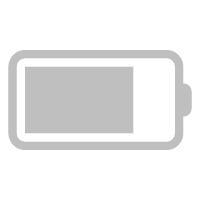
▍Testing & certification standards of traction battery in different regions
|
Certification for Testing battery
|
||||
|
Country/ region |
Certification project |
Standard |
Certificate subject |
Mandatory or not |
|
North America |
cTUVus |
UL 2580 |
Battery and cell used in electric vehicle |
NO |
|
UL 2271 |
Battery used in light electric vehicle |
YES (some areas, e.g. New York, California) |
||
|
China |
Compulsory certification |
GB 38031、GB/T 31484、GB/T 31486 |
Cell/battery system used in electric vehicle |
YES |
|
CCC certification |
GB 43854 |
Lithium battery/ battery pack used in electric bicycle |
YES |
|
|
CQC certification |
GB/T 36972 |
Lithium battery used in electric bicycle |
NO |
|
|
EU |
ECE |
UN ECE R100 |
Traction battery used in M/N vehicle category |
YES |
|
UN ECE R136 |
Traction battery used in L vehicle category |
NO |
||
|
CE certification |
(EU)2023/1542 |
All types of battery |
YES |
|
|
CE certification |
ELV directive |
Traction battery |
YES |
|
|
/ |
EN 50604-1 |
Secondary lithium battery used in light electric vehicle |
YES |
|
|
IECEE |
CB |
IEC 62660-1/-2/-3 |
Secondary lithium traction cell |
NO |
|
Vietnam |
VR |
QCVN 76-2019 |
Battery used in electric bicycle |
NO |
|
QCVN 91-2024 |
Battery used in electric motorbike |
YES |
||
|
India |
CMVR |
AIS 156 Amd.4 |
Traction battery used in L vehicle category |
YES |
|
AIS 038 Rev.2 Amd.4 |
Traction battery used in M/N vehicle category |
YES |
||
|
IS |
IS16893-2/-3 |
Secondary lithium traction cell |
YES |
|
|
Korea |
KC |
KC 62133-2:2020 |
Lithium batteries used in personal mobility tools (electric skateboards, balance vehicles, etc.) with speeds below 25km/h |
YES |
|
KMVSS |
KMVSS Article 18-3 KMVSSTP 48 KS R 1024 (Traction battery used in electric bus) |
Traction lithium battery used in electric vehicle |
YES |
|
|
Taiwan |
BSMI |
CNS 15387、CNS 15424-1or CNS 15424-2 |
Lithium-ion battery used in electric motorbike/bicycle/auxiliary bicycle |
YES |
|
UN ECE R100 |
Traction battery system used in four-wheeler |
YES |
||
|
Malaysia |
SIRIM |
Applicable international standard |
Traction battery used in electric road vehicle |
NO |
|
Thailand |
TISI |
UN ECE R100 or TIS 2952-2561 |
Traction battery used in M/N vehicle category |
YES |
|
UN ECE R136 or TIS 2952-256 |
Traction battery used in L vehicle category |
YES |
||
|
Transportation |
Certification for Transport of Goods |
UN38.3/DGR/IMDG code/ADR/RID/JT/T 617 series |
Battery pack/ electric vehicle |
YES |
▍Introduction to main certification of traction battery
♦ ECE Certification
● Introduction
ECE, the abbreviation of the United Nations Economic Commission for Europe, signed the “CONCERNING THE ADOPTION OF UNIFORM TECHNICAL PRESCRIPTIONS FOR WHEELED VEHICLES, EQUIPMENT AND PARTS WHICH CAN BE FITTED AND/OR BE USED ON WHEELED VEHICLES AND THE CONDITIONS FOR RECIPROCAL RECOGNITION OF APPROVALS GRANTED ON THE BASIS OF THESE PRESCRIPTIONS”in 1958. After that, the contracting parties began to develop a uniform set of motor vehicle regulations (ECE regulations) to certify the applicable motor vehicle and their components. Certification of concerned countries is well recognized among these contracting parties. ECE regulations are drafted by the Road Transport Commission Vehicle Structure Expert Group (WP29) under the United Nations Economic Commission for Europe.
● Application category
ECE Automotive regulations cover product requirements for noise, braking, chassis, energy, lighting, occupant protection, and more.
● Requirements for electric vehicles
|
Product standard |
Application category |
|
ECE-R100 |
Vehicle of category M and N (electric four-wheel vehicle) |
|
ECE-R136 |
Vehicle of category L (electric two-wheel and three-wheel vehicle) |
● Mark

E1: Germany (different countries and regions have different numeric codes, such as E5 represents Sweden)
100R:When it comes to the regulation R100, 100R stands for vehicle number and 100 RES stands for part number
022492:The code is composed of two parts, the first is two digits 02 for the regulation version, and the second is 2492 for the certificate number
♦ Introduction to main certification of traction battery
● Introduction
In 1989, the Government of India enacted the Central Motor Vehicles Act (CMVR). The Act stipulates that all road motor vehicles, construction machinery vehicles, agricultural and forestry machinery vehicles, etc. applicable to CMVR must apply for mandatory certification from a certification body recognized by the Ministry of Road Transport and Highways (MoRT&H). The enactment of the Act marks the beginning of motor vehicle certification in India. Subsequently, the Indian government required that key safety components used in vehicles must be tested and certified, and on September 15, 1997, the Automotive Industry Standards Committee (AISC) was established, and the relevant standards were drafted and issued by the secretary unit ARAI.
● Usage of mark
No mark required. At present, the Indian power battery can complete the certification in the form of performing tests as per the standard and issuing test report, without the relevant certification certificate and certification mark.
● Testing items:
|
|
IS 16893-2/-3: 2018 |
AIS 038Rev.2 |
AIS 156 |
|
Implementation date |
2022.10.01 |
Became mandatory from 2022.10.01 Manufacturer applications are currently accepted |
|
|
Reference |
IEC 62660-2: 2010 IEC 62660-3: 2016 |
UNECE R100 Rev.3 Technical requirements and test methods are equivalent to UN GTR 20 Phase1 |
UN ECE R136 |
|
Application category |
Cell of Traction Batteries |
Vehicle of category M and N |
Vehicle of category L |
♦ North America Traction Battery Certification
● Introduction
There are currently no mandatory certification requirements for traction batteries in North America, but some states in the United States (such as California/New York) have mandatory certification requirements for light electric vehicle batteries, which shall meet the UL 2271 standard.
● Standards and applicable scope
|
Standard Code |
Standard Name |
Applicable Scope |
|
UL 2271 |
Batteries for Use In Light ElectricVehicle(LEV)Applications |
This standard applies to batteries for electric bicycles, electric scooters, golf carts, electric wheelchairs, unmanned aerial vehicles (UAVs), personal mobile devices and other products, but does not apply to batteries for electric motorcycles, electric trucks and other products. |
|
UL 2272 |
Electrical Systems for Personal E-Mobility Devices |
This standard applies to the electrical components and electric drive systems of personal mobile devices. |
|
UL 2849 |
Electrical Systems for e-Bikes |
This standard applies to the electrical systems of electric bicycles powered by lithium based rechargeable batteries. |
|
UL 2580 |
Batteries for Use in Electric Vehicles |
This standard applies to passenger cars on road and heavy vehicles off road such as industrial trucks. |
Regions
Act
Mandatory
Requirements
USA/Canada
/
NO
² Electric bicycle: 16CFR Part1512, UL 2849 or EN15194
² Battery: UL 2271 or EN 50604-1 or EN 62133-2
² Personal mobile Devices: UL 2272; Battery: UL 2271
California
SB1271
YES
² Electric bicycle: UL 2849 or EN 15194; Battery: UL 2271
² Personal mobile Devices: UL 2272; Battery: UL 2271
New York
S154F
YES
*Personal mobility devices such as: hoverboards, self-balancing unicycles, electric scooters, self-balancing vehicles, electric tricycles
♦ EU traction battery requirements (CE certification - EU New Batteries Regulation)
● Introduction
In 2023, the European Union introduced EU new batteries regulation, which put forward a series of requirements for the full life cycle of batteries. The specific requirements for traction batteries focuses on carbon footprint, life span, recycling and other aspects. All electric vehicle batteries and light means of transport batteries entering the EU market must meet the requirements of EU new batteries regulation.
● Applicable scope
EU new batteries regulation divides traction batteries into two categories, as follows:Light means of transport batteries: weighing < 25kg, specially designed to power towed wheeled vehicles, including batteries for category L vehicles as defined in directive (EU)168/2013.
Electric vehicle batteries: traction batteries for category L vehicles weighing > 25kg, or specifically designed for use in category M, N or O vehicles as specified in (EU)2018/858.
● Requirements
Article
Requirements
Remark
Article 6
Restriction on Substances
(Annex I)
Content of lead, cadmium, mercury
/
REACH Annex XVII
/
ELV directive: Lead, mercury, hexavalent chromium, cadmium
Apply to eletric vehicle battery
Article 7
Carbon footprint of electric vehicle batteries
Calculate the carbon footprint throughout the battery's entire life cycle and issue a carbon footprint statement.
Effective from 2025.8.18
Article 10
Performance and durability requirements
1) Rated capacity (Ah) and capacity fade (%)
2) Power (W) and power fade (%)
3) Internal resistance (Ω) and internal resistance increase (%)
4) If applicable, energy round-trip efficiency and its fade (%)
5) Expected life-time
The attached documents include the above performance and durability parameter values.
/
Article 11
Removability and replaceability of LMT batteries
1. Batteries are readily removable and replaceable by on independent professional at anytime.
2. The battery can be replaced by another compatible battery without affecting the product's performance, safety, etc.
Apply to batteries for light vehicles
Article 13
Battery labels and markings
Meet the requirments of separate collection symbol, label, and CE requirements
/
Article 14
The state of health and expected lifetime of battery
Electric vehicles: BMS need to display SOCE (state of certified energy)
LMT batteries : BMS display information such as the number of charge and discharge cycles; Documentation is required to demonstrate the basic information and functionality of the BMS (or may be included in the specification)
/
Article 15-20
Conformity assessment requirements
CE marking + Declaration of conformity DoC
/
Article 47-53
Due diligence
(For companies with annual sales of more than 40 million euros)
Companies are required to conduct supply chain due diligence on raw materials.
Effective from 2025.8.18
Article 54-76
Waste battery management
Enterprises need to complete registration with the competent authorities in each country, and bear the extended producer responsibility system.
Effective from 2025.8.18
♦ India traction battery test
● Introduction
In 1989, the Government of India enacted the Central Motor Vehicles Act (CMVR). The Act stipulates that all road motor vehicles, construction machinery vehicles, agricultural and forestry machinery vehicles, etc. applicable to CMVR must apply for mandatory certification from a certification body recognized by the Ministry of Road Transport and Highways (MoRT&H). The enactment of the Act marks the beginning of motor vehicle certification in India. Subsequently, the Indian government required that key safety components used in vehicles must be tested and certified.
● Usage of mark
At this stage, the Indian traction cell is required to complete the certification in the form of test report after conducting tests, without the relevant certification certificate or certification mark. After the traction battery is certified, certificate number (TAC number) is required on the product body.
● Test items
|
|
IS 16893-2/-3: 2018 |
AIS 038Rev.2 |
AIS 156 |
|
Enforcement Date |
Mandatory from 2022.10.01 |
Mandatroy from 2022.10.01, and manufacturer applications are currently accepted |
|
|
Applicable Scope |
Traction cells |
Vehicle category M/N |
Vehicle category L |
♦ Mandatory Vietnam Register Certification
● Introduction
Since 2005, the Vietnamese government has promulgated a series of laws and regulations to put forward relevant certification requirements for motor vehicles and their parts. The market access management department of the product is the Vietnam Ministry of Communications and its subordinate Motor Vehicle Registration Authority, implementing the Vietnam Register system (referred to as VR certification). Since April 2018, the Vietnam Motor Vehicle Registration Authority has mandated VR certification for aftermarket auto parts.
● Mandatory certification product scope
The range of products subject to mandatory certification includes helmets, safety glass, wheels, rearview mirrors, tires, headlights, fuel tanks, storage batteries, interior materials, pressure vessels, power batteries, etc.
At present, the mandatory requirements of batteries are only for electric bicycles and motorcycles, but not for electric vehicles.
● Sample quantity and lead time
|
Product |
Mandatory |
Standard |
Sample quantity |
Lead time |
|
Batteries for e-bicycles |
NO |
QCVN76-2019 |
4 battery packs + 1 cell |
4-6 months |
|
Batteries for e-motorcycles |
YES |
QCVN91-2019 |
4 battery packs + 1 cell |
4-6 months |
▍How MCM can help?
● MCM has great ability in lithium-ion battery transportation testing. Our report and certification can help you transport your goods to every country.
● MCM has any equipment to test the safety and performance of your cells and batteries. You can even get accuracy testing data from us in your R&D stage.
● We have close relationship with testing centers and international certification organization. We can provide services for mandatory testing and international certification. You can gain multiple certificates with one testing.




































